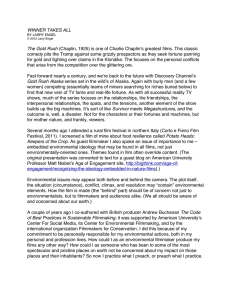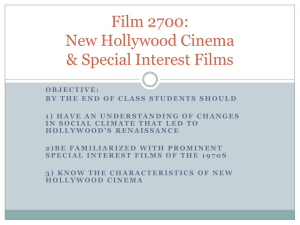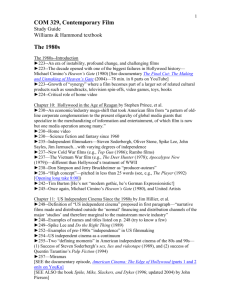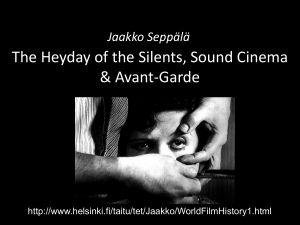Representation of African Americans in the
advertisement
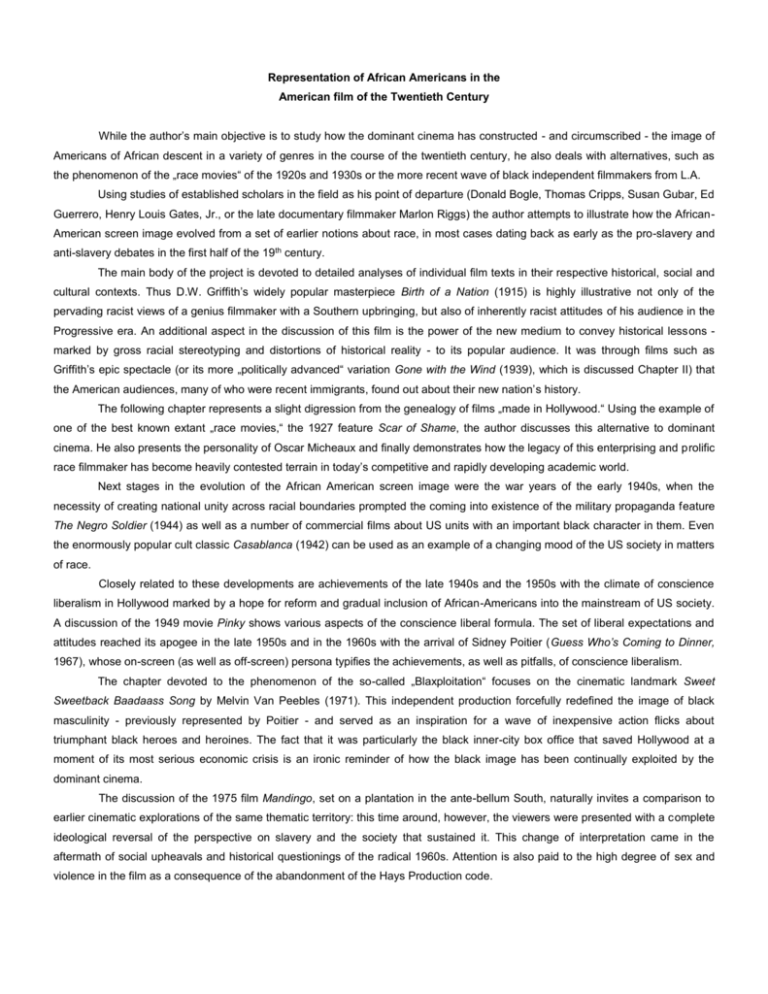
Representation of African Americans in the American film of the Twentieth Century While the author’s main objective is to study how the dominant cinema has constructed - and circumscribed - the image of Americans of African descent in a variety of genres in the course of the twentieth century, he also deals with alternatives, such as the phenomenon of the „race movies“ of the 1920s and 1930s or the more recent wave of black independent filmmakers from L.A. Using studies of established scholars in the field as his point of departure (Donald Bogle, Thomas Cripps, Susan Gubar, Ed Guerrero, Henry Louis Gates, Jr., or the late documentary filmmaker Marlon Riggs) the author attempts to illustrate how the AfricanAmerican screen image evolved from a set of earlier notions about race, in most cases dating back as early as the pro-slavery and anti-slavery debates in the first half of the 19th century. The main body of the project is devoted to detailed analyses of individual film texts in their respective historical, social and cultural contexts. Thus D.W. Griffith’s widely popular masterpiece Birth of a Nation (1915) is highly illustrative not only of the pervading racist views of a genius filmmaker with a Southern upbringing, but also of inherently racist attitudes of his audience in the Progressive era. An additional aspect in the discussion of this film is the power of the new medium to convey historical lessons marked by gross racial stereotyping and distortions of historical reality - to its popular audience. It was through films such as Griffith’s epic spectacle (or its more „politically advanced“ variation Gone with the Wind (1939), which is discussed Chapter II) that the American audiences, many of who were recent immigrants, found out about their new nation’s history. The following chapter represents a slight digression from the genealogy of films „made in Hollywood.“ Using the example of one of the best known extant „race movies,“ the 1927 feature Scar of Shame, the author discusses this alternative to dominant cinema. He also presents the personality of Oscar Micheaux and finally demonstrates how the legacy of this enterprising and prolific race filmmaker has become heavily contested terrain in today’s competitive and rapidly developing academic world. Next stages in the evolution of the African American screen image were the war years of the early 1940s, when the necessity of creating national unity across racial boundaries prompted the coming into existence of the military propaganda feature The Negro Soldier (1944) as well as a number of commercial films about US units with an important black character in them. Even the enormously popular cult classic Casablanca (1942) can be used as an example of a changing mood of the US society in matters of race. Closely related to these developments are achievements of the late 1940s and the 1950s with the climate of conscience liberalism in Hollywood marked by a hope for reform and gradual inclusion of African-Americans into the mainstream of US society. A discussion of the 1949 movie Pinky shows various aspects of the conscience liberal formula. The set of liberal expectations and attitudes reached its apogee in the late 1950s and in the 1960s with the arrival of Sidney Poitier (Guess Who’s Coming to Dinner, 1967), whose on-screen (as well as off-screen) persona typifies the achievements, as well as pitfalls, of conscience liberalism. The chapter devoted to the phenomenon of the so-called „Blaxploitation“ focuses on the cinematic landmark Sweet Sweetback Baadaass Song by Melvin Van Peebles (1971). This independent production forcefully redefined the image of black masculinity - previously represented by Poitier - and served as an inspiration for a wave of inexpensive action flicks about triumphant black heroes and heroines. The fact that it was particularly the black inner-city box office that saved Hollywood at a moment of its most serious economic crisis is an ironic reminder of how the black image has been continually exploited by the dominant cinema. The discussion of the 1975 film Mandingo, set on a plantation in the ante-bellum South, naturally invites a comparison to earlier cinematic explorations of the same thematic territory: this time around, however, the viewers were presented with a complete ideological reversal of the perspective on slavery and the society that sustained it. This change of interpretation came in the aftermath of social upheavals and historical questionings of the radical 1960s. Attention is also paid to the high degree of sex and violence in the film as a consequence of the abandonment of the Hays Production code. The next chapter is devoted to the personality of Spike Lee. The author tries to assess the achievement of this extraordinary filmmaker and provide an extensive cultural analysis of his landmark film Do the Right Thing (1989), particularly in the context of the Reagan’s America of the 1980s. Lee‘s importance in current American cinema goes beyond the mere fact of having made perhaps the most interesting films about the African-American condition so far. His success has also inspired a number of other black filmmakers to make notable features in their own right. The chapter entitled „Ghetto Movies“ comments on a group of films that attempted to portray frankly the everyday existence and social plight of African-American youths in the inner-cities. The final chapter is devoted to a detailed examination of Julie Dash’s independent feature Daughters of the Dust. Dash’s unusual, rich and visually stunning film about the black female experience at the turn of the 20th century is presented in the context of Los Angeles independent filmmaking as well as in the context of the United States at the end of the millennium.



